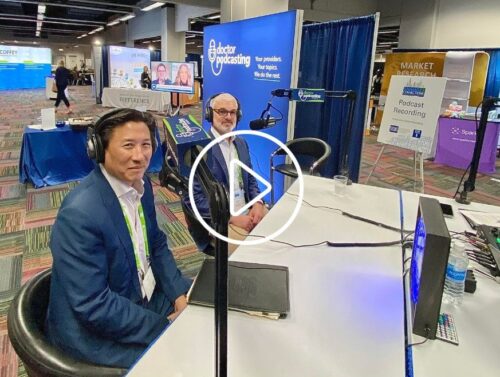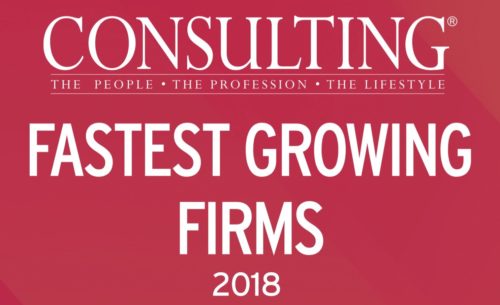Our Managing Director, Anthony Powell, and Dr. Eugene Hong of MUSC Health were recently featured on the Society for Health Care Strategy & Market Development’s [SHSMD] “Rapid Insights” podcast to discuss their keynote session “Lessons Learned: Academic Medical Centers Acquiring Community Hospitals” from SHSMD’s 2023 Annual Conference.
Click the link below to listen to the podcast, or see the full transcript underneath [courtesy of Doctor Podcasting].
Full Transcript
Bill Klaproth (Host): This is a special podcast produced onsite at SHSMD Connections 2023 Annual Conference in Chicago as we talk with keynote speakers and session leaders directly from the show floor. I’m your host, Bill Klaproth. And with me is Tony Powell, Managing Director for Knowledge Capital Group; and Dr. Gene Hong, Chief Physician Executive at MUSC Health. And we’re going to talk about their SHSMD session, Lessons Learned: Academic Medical Centers Acquiring Community Hospitals. Tony and Dr. Gene, welcome.
Dr. Eugene Hong: Thanks for having us.
Host: Absolutely.
Anthony Powell: Bill, it’s our pleasure. Thank you.
Host: Yeah. Thank you for being here. This is going to be fun. So Tony, let me start with you. Academic medical centers or AMC and community hospitals are realizing more incentives to collaborate than ever before. So generally, what value is each entity seeking from the alignment?
Anthony Powell: I’m going to start with patient care. You know, I grew up in a small town and I think having the connectivity of the little hospital that I had with the academic center in the big city, which was Pittsburgh where I grew up, was spectacular. And I think that plays out now in the M&A that I can get care locally. And if I need something really special, they have rapid access to the academic medical center and vice versa, they can send me back when I’m ready to recuperate in my community. So, I think that’s one of the first ones.
Host: Right. Dr. Gene, thoughts on that?
Dr. Eugene Hong: Yeah, I would agree with Tony in that it starts with patient care and excellence in patient care. What I also really liked though in our experience is that we learned from each other. Both the academic medical center and the community hospitals have something to contribute to overall patient care and improving healthcare delivery.
Host: Absolutely. So then, Dr. Gene, what is the potential process for designing an organizational governance model for a system that’s going through integration?
Dr. Eugene Hong: I’d make a couple points here, Bill, that we’ve learned that I think aligning the decision-making process is really important as you go through these processes. And then, the other lesson for myself and for Tony and our organizations is sharing the values of why we’re doing this and being very clear and communicating that and having good discussions around shared values.
Host: So when you say sharing the values, are those generally well accepted throughout the systems when you do this integration?
Dr. Eugene Hong: I would say that, when you’re merging two organizations, there’s always going to be a merger of cultures. And so hopefully, if it’s a good fit, then you already have a lot of shared values, but it’s better to have that conversation as early as possible and as often as possible.
Host: Yeah. Have that conversation upfront. Tony, thoughts on that?
Anthony Powell: Yeah. On the governance side, you have to have a clear decision-making process because you’re going to have tons of opinions. “We should do this. We shouldn’t do this.” And without a real mechanism to say go, no-go or integrate, not integrate or systematize it or leave it decentralized, you waste a lot of energy and maybe end up getting to the wrong answer.
Host: Right. So, that makes sense. Really get to know that ahead of time. And so then, what are some of the key components of integration management? And have some insights into what function should be centralized versus managed at the divisional facility level, Tony.
Anthony Powell: Components wise, clear articulation of everybody’s roles and structure where there’s going back to the decision-making, and then work groups that have subject matter experts in their areas. So, think about nursing, revenue cycle, information solutions security, disaster. All those groups have super specialized stuff that one executive might have an appreciation for all those things, they can’t be subject matter experts in all those. And having those work groups really have a clear charter of what they want to accomplish and how they’re going to work together with the acquiring entity and the acquired entity to go forward with the plan.
Host: So, let me ask you that before you get to the second part of the question, that seems like a lot of work. How do you put all of that messaging and processes and instruction in place?
Anthony Powell: A good structure. The structure that we did with MUSC we had an integration steering committee, which sat at the top of it was kind of the decision-making body. And then, we had an integration kind of PMO that herded all the cats, right? “Here are all the functional work groups. Here’s the meeting cadence. Here’s the charter. Here’s what we’re working on. Okay, we are debating this issue. We have three days to come back with an answer to send them off. It’s two days. How are you guys coming here?” Just really managing it. And we partnered with MUSC and we ultimately built a playbook that we gave to them as part of the engagement. And now, they run all their integrations in-house.
Host: So, you have to really stay on it, it sounds like.
Anthony Powell: A 100% on top all the time. Someone asked in our session, when we were talking about one of the timing, which started right before Thanksgiving and closed in March, so somebody said, “So no holidays?” And we said, “Well, there were holidays on the calendar.” The group had to do a lot of hard work.
Host: Right. Yeah, that makes sense. All right. So then, the second part of the question was what function should be centralized versus managed at the divisional facility level.
Dr. Eugene Hong: So, it’s a great second followup question there. I was reflecting that we’re learning as we go through them. We’ve been through several rounds of expansion and several rounds where we’ve acquired and integrated and partnered with community hospitals. So, the bottom line for me is about change management. And even through some of the things we did it with some of our earlier expansions, we’re doing differently now in terms of centralization versus decentralization, and that was part of our talk that we just gave.
But I will say practically speaking, it’s about managing the change that two organizations are going through, but then you can get as granular as you want with that discussion. Tony mentioned HR, IS, any number of things, even security. For myself as the physician lead on the MUSC side, we talked about how we hire providers. We have an improved patient access. Even things as granular as admit transfer centers across our expanding health system. And I think we’re doing better with each one of these steps we go through. But I would say that it’s probably not one-size-fits-all answer for the centralization versus decentralization question.
Host: Yeah. That seems like the right answer for that because every merger integration is going to be different and have their own nuances. Is that right?
Dr. Eugene Hong: Yep. Each organization is going to have its own strengths and its own weaknesses.
Host: Right. Yeah, yeah, absolutely. So, Dr. Gene, this is a perfect question for you then, what issues do providers face after consolidation and how can this influence clinical quality and what should a leader do to help with this integration?
Dr. Eugene Hong: Yeah, sure. There’s a lot to that question, Bill. So, I’ll try I make a few points. The one for providers, kind of an obvious one, if you’re fortunate enough to be on electronic medical records and merge with another organization that may be on a different set, having one unified EMR platform, of course, it was important. And the take-home point is you can never have enough at the elbow support after a merger between two organizations. So if you think you’re all set and you’re providing the adequate support, I would double that in your head before you go forward and make the same mistakes that we may have made. So, that’s one very practical thing.
I think the other is, again, you’re bringing on new providers and how you measure and what your expectations are in terms of their activity. So, quality was a big emphasis for us in our mergers, because it’s a core value for us as one example, but also things like productivity. And those are just a couple of examples, I think, that are important after the consolidation for the providers.
Host: At the elbow support, I like that. Okay. So, you also mentioned, Dr. Gene, try to avoid mistakes that were made. Can you share some pitfalls that we should be looking out for? Maybe a question for both of you. I’ll start with you, Dr. Gene.
Dr. Eugene Hong: Absolutely. The first one that comes to my mind, Bill, is start planning for after day one of the acquisition well before day one occurs. So, you’re so focused on getting to day one that you really should be starting to plan for day 30, day 90, day 120.
Host: Yeah. “Hey, we’re here. We made it. Now what? Now what do we do?” Yeah, that makes sense. Pitfalls that you’ve seen, Tony?
Anthony Powell: Yeah, I have a pitfall in mind. It’s around articulating why we’re doing this with everybody. So, understanding the why and being very crisp, that’s the necessity, because it’s a confidential thing you’re doing, right? You just don’t announce like, “Hey, we’re contemplating buying X, Y, Z. Let’s have a town hall and talk about your thoughts.” So, it’s super tight. But you need everybody’s buy-in ultimately to be successful and it’s that balance. And, you know, I don’t really have the right answer for that, probably some marketing people might be better suited to answer that. But that’s something to keep in mind because I don’t really know the first time we did this, Gene, if we internally communicated the why sufficiently.
Dr. Eugene Hong: We could have done more there, Tony. Exactly right.
Host: Yeah. How do you encounter pushback or how do you deal with pushback? “Why are we doing this? I don’t want to do this. We’ve got our own thing here. We’re strong. We’re solid. We’re making our own way.” How do you deal with that? Dr. Gene, I’ll start with you.
Dr. Eugene Hong: As best as you can, Bill. As best as you can.
Host: Yeah. Because inevitably you’re going to get that, right?
Dr. Eugene Hong: Yeah.
Host: Yeah. Tony?
Anthony Powell: I think it goes back to the why, because everybody can second guess, and you’re going to make mistakes, right? And you’re going to make bad assumptions and people are going to use that to go, “Oh, that’s why we shouldn’t have done it. But I think if you have the why, this is what we’re looking to gain from it, you know, the patient care, maybe there’s some sort of revenue enhancement or cost savings, all that. And you articulate that upfront and you measure against it throughout. Slowly, but surely you get people bought in and change management starts to occur.
Dr. Eugene Hong: You know, if I could add to that, Bill, and Tony, to Tony’s remarks, we’re still revisiting the why even five years later and admitting where we could have done better here, but also acknowledging where, “Hey, we did make the right decision there and looking at that and showing data where we can.” So, we’re still even many years later just looking at a lot.
Host: And do you then celebrate? “The victories are here. We said this was going to happen. This is going to be a positive benefit of this,” and it’s happened, do you celebrate those and you have to continually, I would think, articulate those victories too, right? “This is why we did this and look it’s happening.”
Dr. Eugene Hong: Yep. We try and celebrate the victories because we’re still expanding, it’s still growing. But also acknowledging, “Hey, we could have done better here or done differently there.”
Host: Absolutely. We’re being transparent like that, I would imagine, adds credibility to what you’re trying to sell them or talk to them about when you’re honest and saying, “Yeah, we’ve made some mistakes. We could’ve done this better,” but let’s remember the why, why we’re doing this, right? Is that the thought behind it? Absolutely.
Wow, what a great session. Well, thank you both for stopping by, Dr. Gene and Tony. Before we wrap up, let’s get your final thoughts. Dr. Gene, let’s start with you. Anything you’d like to add?
Dr. Eugene Hong: Yeah, I can’t communicate enough in these processes, right? And it reminds me of some of the lessons that I think a lot of healthcare organizations have learned during COVID. That is to act urgently, act with transparency. And if you think you’ve communicated, communicate some more.
Host: Right. That’s a great message for all of us, for any industry really, if you think you’ve communicated, communicate some more. Absolutely. Well, Dr. Gene, thank you for that. And Tony, let’s wrap up with you then. Any final thoughts?
Anthony Powell: Sure, two. First one would be just because the deal is presented, don’t necessarily have the group think get you to where you think you need to say yes. Second would be to make sure that you have your assumptions be reasonable. I see too many times people have these great hockey stick growths like, “If we just do this, we’re going to grow by 40%. We’re going to cut costs by 40%.” I’d be a little bit more conservative on that. And then if it still works in the conservative model, then it might be a good deal. But if it only works in the crazy hockey stick model, probably better to pass.
Host: That’s a great analogy and just one final followup on the group think. Is it the problem when people have the acquisition, the chase and capture in mind, that they forget the why, and then they’re doing it for potentially the wrong reasons if the group think goes in the wrong way? Is that kind of what you’re mentioning or alluding to?
Anthony Powell: Or if you don’t have a process, right? But I mean it’s–
Host: Oh, okay.
Anthony Powell: Right. Because, “Hey, we have this opportunity, right? It’s an opportunity. It only knocks once, right? If we don’t do it, somebody else is going to do it.” And all of a sudden, you get this group think and go, “Yeah, that might work and this…” and “Oh, we can grow.” And then next thing you know, it’s taken on a life of its own. So, that’s just something to think about.
Host: Yeah, absolutely. Well, thank you both. This has been a pleasure talking with both of you, Dr. Gene and Tony. Thank you very much. I appreciate it. And once again, that’s Tony Powell and Dr. Gene Hong, and make sure you sign up for the SHSMD Connections Virtual Conference, October 20th, 2023 plus on-demand through the end of the year. The virtual conference will feature access to 50 plus sessions recorded from the September in-person conference plus all new live sessions. Just go to shsmd.org/annual to learn more and to get registered. And please join us at SHSMD Connections 2024 next October in Denver, Colorado. And if you’ve found this podcast helpful, please share it on your social channels. And to access our full podcast library of over 100 podcasts, please visit shsmd.org/podcasts. And as always, thanks for listening.
To see Dr. Hong and Tony’s full presentation at the SHSMD 2023 Connections Conference, please click here.
Special thanks to the Society for Health Care Strategy & Market Development (SHSMD) Rapid Insights podcast and Doctor Podcasting for the opportunity.








